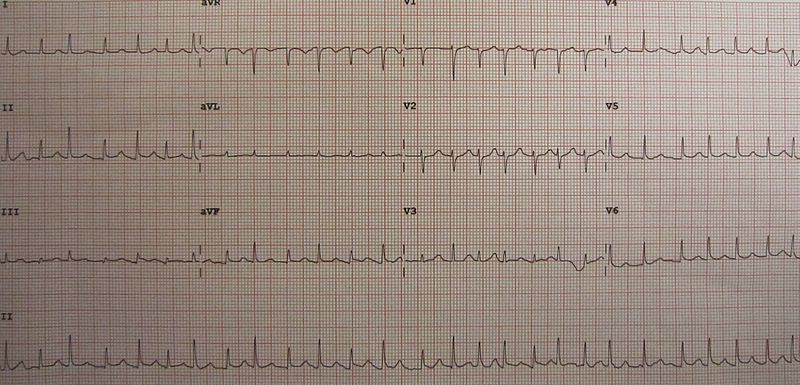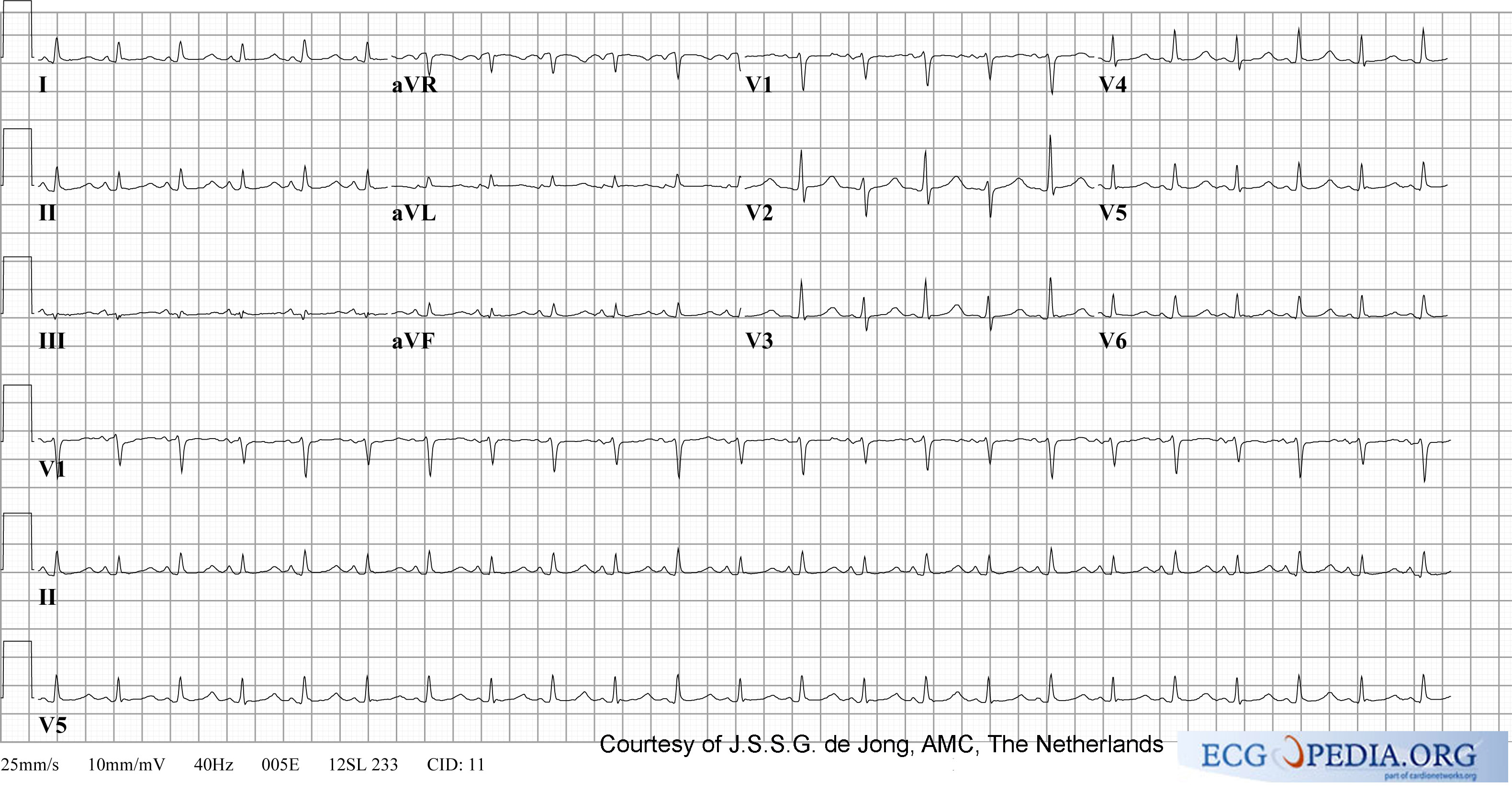Electrical alternans
|
Pericarditis Microchapters |
|
Diagnosis |
|---|
|
Treatment |
|
Surgery |
|
Case Studies |
|
Electrical alternans On the Web |
|
American Roentgen Ray Society Images of Electrical alternans |
Editor-In-Chief: C. Michael Gibson, M.S., M.D. [1]
Synonyms and keywords: QRS alternans, alternans
Overview
Electrical alternans is an electrocardiographic phenomenon of alternation of QRS complex amplitude or axis between beats.
Pathophysiology
It is seen in cardiac tamponade and is thought to be related to changes in the ventricular electrical axis due to fluid in the pericardium.
Causes
Electrocardiographic Examples


